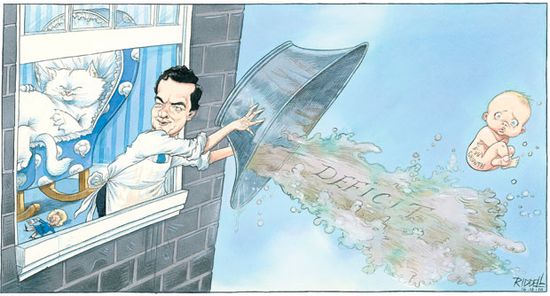Pairing exercises is a popular program design strategy. It builds in rest intervals between main lifts and allows athletes to make more effective use of their rest intervals (and therefore of their time in the gym). Basically, it’s a strategy to condense more effective training stimuli into the same absolute amount of time.
Conceptually, pairing exercises to get more “bang for your buck” is an inherently good practice. However, as with all things training, there are right and wrong, or should I say better and worse, ways of implementing this practice. When deciding what exercises to pair, keep these three things in mind:
1) Use Non-Competing Grips
Many primary pulling-based exercises, such as deadlift and chin-up variations and most dumbbell exercises, place a high load on the grip musculature. If the program is designed such that the athlete is pairing upper and lower body exercises, it’s important to alter the stress to the grip so that grip strength does not become the limiting factor in the exercise. As an example, a dumbbell reverse lunge and a chin-up would place a similar stress on the grip. It’s likely that the athlete’s performance in the chin-up would be compromised due to grip fatigue. In contrast, pairing a dumbbell reverse lunge with a loaded push-up or a dumbbell chest press would alter the grip stress and therefore be less likely to have grip strength be the limiting factor. In general, an easy way to avoid this problem is to pair lower body pulling exercises (deadlift variations), with upper body pressing variations, and lower body pressing exercises (squat variations) with upper body pulling variations. There are some exceptions to this, but if you stick with this template you’ll be right more often than not.
2) Emphasize different body parts
It’s important to note that “paired exercises” and “supersets” are not the same thing; at least not the way they’re typically used. Supersets usually refer to combining two or more exercises for the same muscle group (or movement pattern). Paired exercises is a more broad phrase that refers to combining two or more exercises. In this sense, there is usually a “primary” exercise that is the main focus of the pair, and a secondary exercise that is used to emphasize a different training quality or body part. Unless hypertrophy or localized work capacity is your primary training aim, it’s ideal not to combine exercises with too much overlap in emphasized musculature. For example, pairing a squat and a reverse lunge or a slideboard hamstring curl would impair the athlete’s ability to perform both exercises optimally. In full-body lifting days, you can use the template described above (LB pull with UB press, and LB press with UB pull). In lower-upper splits, you can pair the primary lift with a complimentary core exercise. For example, pairing a deadlift with a glute bridge would help ensure optimal glute activation during the deadlift, which would ultimately assist the main lift.

Glutes-Optimal activation is key
3) Don’t Pair Unilateral with Unilateral
Coming back to the idea of pairing LB exercises with UB exercises, using exercises in both categories that have a unilateral emphasis can be counterproductive (e.g. reverse lunge and 1-arm row, or back leg raised split squat and alternate db chest press). There are a number of advantages to using unilateral exercises, but the bottom line is that for most people (e.g. NOT elite level powerlifters that move truly heavy loads) they’re more physically and mentally taxing and take more time to perform. Pairing two unilateral exercises can drain the athlete and slow the overall flow of the training program. Instead, consider pairing unilateral exercises with bilateral exercises. As a full-body training example, you might pair:
A1) DB Reverse Lunge (unilateral)
A2) Loaded Push-Up (bilateral)
B1) Slideboard Hamstring Curl (bilateral)
B2) Standing 1-Arm Cable Row (unilateral)
Take Home
These are just a few important considerations when designing training programs using a paired-exercise system. Ultimately, the most important thing is that the exercises don’t compete with one another. The goal of pairing exercises is to cram more “good” into less time. Keeping these things in mind will make sure you don’t throw the baby out with the bathwater (don’t lose sight of what’s important!).

To your success,
Kevin Neeld